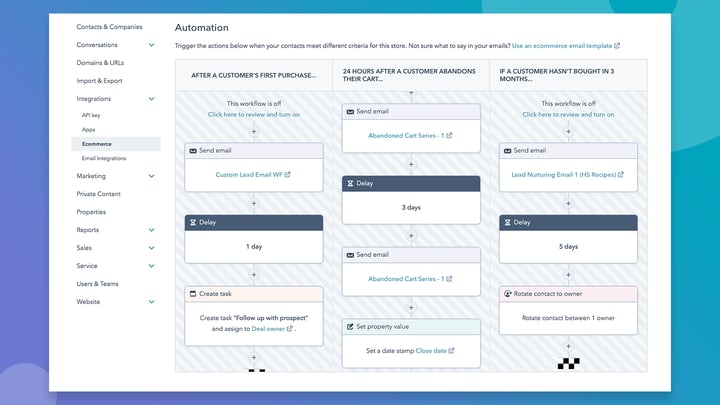I just had an interesting conversation with a start-up that wants to improve its conversion rates, build a solid lead nurture framework and grow its product-led motion and as with many conversations like this, we came back to basics: Who are you selling to? How well do you know them? Is your entire commercial organization focussed on this customer?
Another conversation about dashboards and reporting: I need to have a dashboard that shows the full funnel performance, including team activity metrics that matter. My back-to-basics question was: What are the lifecycle stages we work with? What is the handover process? Do we have an SLA? Do we know anything about the automation running on incoming leads?
I know it’s 2023 and we’d like to talk about plug-and-play attribution tooling, AI-led chatbots that automatically show your visitor exactly what they need; but in order to make those things work like we imagine they should work, it’s important to go back to basics and make sure they are in order and they are still relevant as your business has grown since you last looked at them.
The very first topic to verify is your personas and their buyer journey. ICP is important but as someone recently mentioned: ‘I cannot sell to an ICP’. And of course, they are right. So today I’ll share a checklist on how to either define or review your Persona.
Segmentation
To effectively segment your target audience, it's important to start with analyzing your current customer base and identifying commonalities among them, such as demographics. For example, if you sell B2B software to engineers in large enterprise organizations, you may find that they are mostly male, around 35 years old, and based in an urban setting. However, it's important to go beyond demographics and also consider the behavior and psychographics of your target audience.
One way to do this is to imagine a day in the life of your target audience. For example, you may assume that engineers in urban settings commute by public transportation and prefer written communication over phone conversations. They also want to test a product before purchasing and tend to work late into the evenings. By understanding these behaviors, you can tailor your content and marketing efforts to better reach and engage with this audience.
Questions to ask yourself
Here are some questions to ask yourself about your ideal customer:
- Looking at the sales of the past 12 months, from when the sales cycle started to close who were the key stakeholders?
- Describe the first stakeholder (job title, seniority, industry).
- What were their biggest pain points?
- What does success look like for them?
- The alarm goes for stakeholder 1 in the morning: what time is it?
- What do they do first? How do they get to work? What happens next? Describe their day in detail.
- What are the typical questions your sales team gets asked by stakeholder 1?
- Which of your products/ services is stakeholder 1 most interested in?
- Rinse & repeat for any other stakeholders.
- Do stakeholders vary depending on the industry, company size, or if in B2C space: location, household type, marital status, etc?
- What’s your company’s perception in the market?
Motivation and behavior
Another key factor to consider is the "why" behind your target audience's decision-making process. This can be broken down into three stages: awareness, consideration, and decision. During the awareness stage, your target audience recognizes that they have a problem and want to explore potential solutions. At the consideration stage, they begin to evaluate different options and weigh the pros and cons. Finally, at the decision stage, they are ready to choose a provider and make a purchase.
By understanding these stages and the pain points and solutions your target audience is seeking, you can create targeted content and messaging that speaks directly to their needs. This can lead to higher conversion rates and more focused use of your marketing budget and efforts.
Overall, by taking the time to understand the behavior, psychographics, and decision-making process of your target audience, you can create a more effective and efficient marketing strategy that drives results.
In order to truly understand your target audience and effectively market to them, it's important to go beyond just identifying their basic demographic information. You need to dig deeper and understand the "why" behind their decision-making process. This involves working through a basic decision-making funnel.
Awareness Stage
The first stage is the Awareness Stage. This is where your potential customer recognizes that they have a problem and wants to explore it. At this stage, it's important to show empathy and understanding for the problem your persona is facing. Focus on troubleshooting, issues, and how to improve the situation or resolve the problem. Add your persona's pain points into your persona profile.
Consideration Stage
The second stage is the Consideration Stage. At this point, your persona has a better grasp of the problem they're trying to solve and wants to start considering different solutions. Offer details on various options and what works well, while avoiding pushing your own product. Be sincere and helpful, and open them up to all possibilities. Add to your persona profile what potential solutions to pain points your persona will evaluate.
Decision Stage
The final stage is the Decision Stage. Now you can talk about your product. Your persona is ready to investigate different providers for a solution, and you want to highlight why your product is the best choice. Use case studies, reviews, and comparisons to show how your product stands out. In your persona profile, include information about what your persona values in your product and what it might be lacking.
By understanding the "why" behind your persona's decision-making process, you'll be able to create content and marketing messages that resonate with them. This will lead to higher conversion rates because you're only talking to people who are actually interested in what you have to offer. This will also allow you to focus your efforts and budget on the channels and messages that are most likely to work for your persona.
Don't be afraid to narrow down your target audience to a specific buyer persona. When you target everyone, no one feels spoken to directly. By focusing on a specific buyer persona, you can increase conversion rates, reduce your budget and working effort, and increase your ROI.
Do you have your basics in order? If not, an outside eye can be helpful to review your personas and how you engage them.






